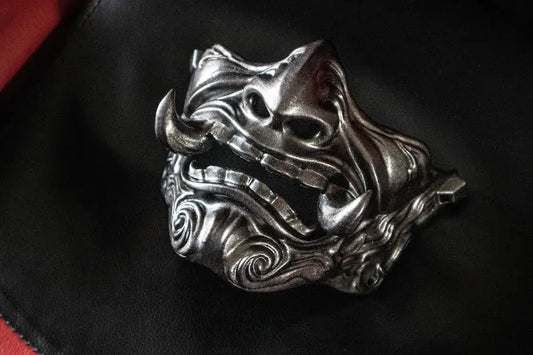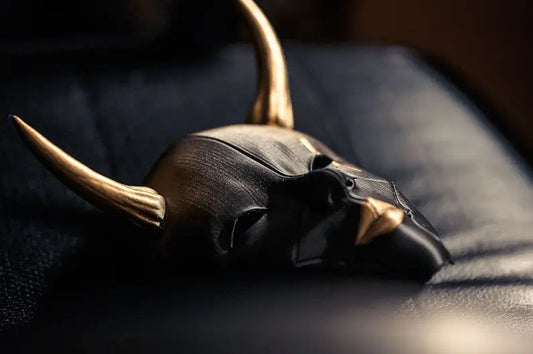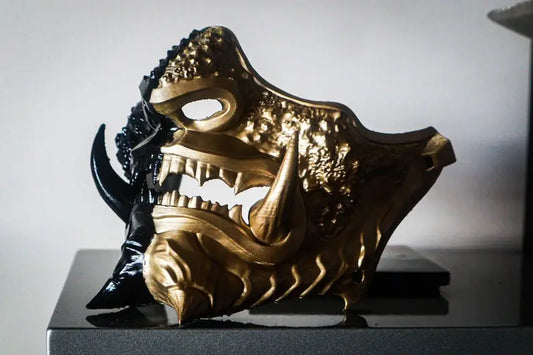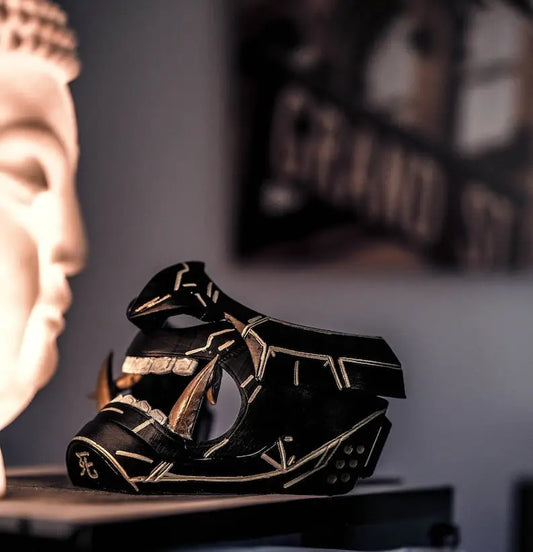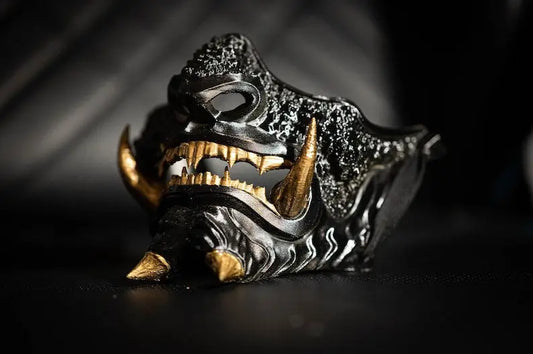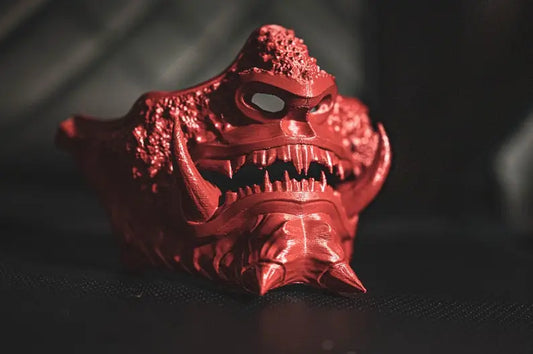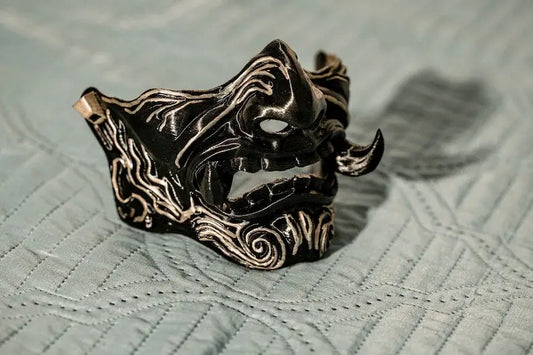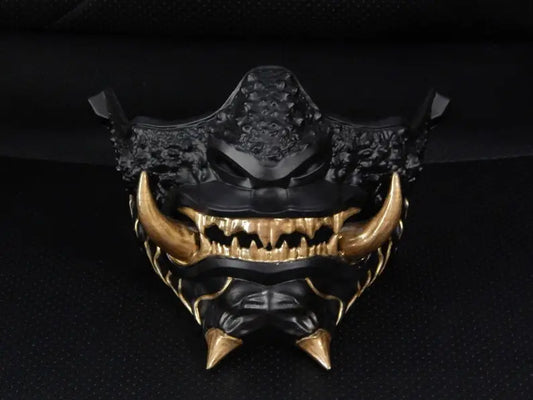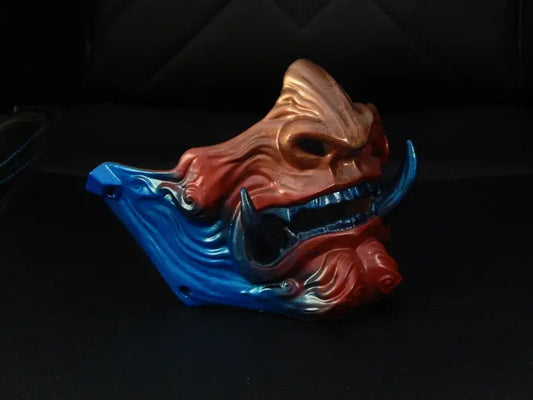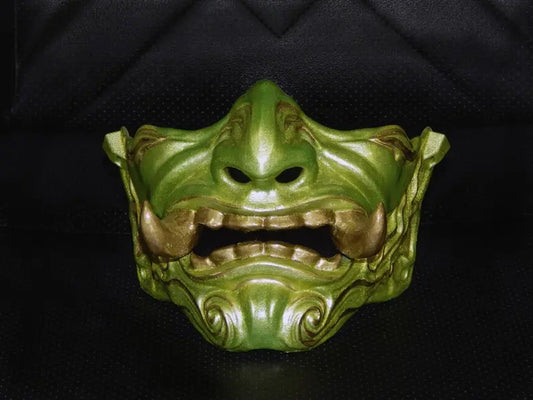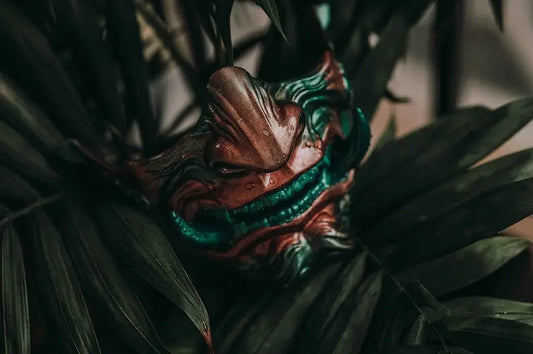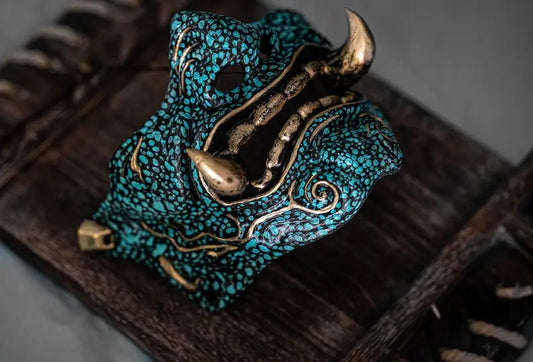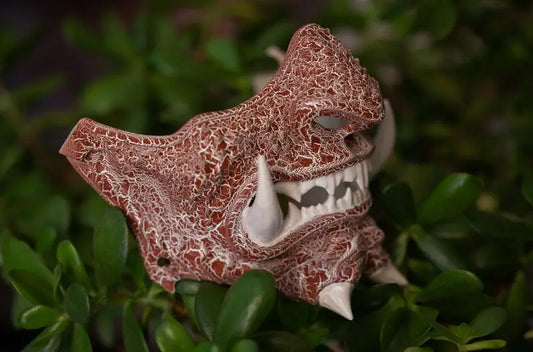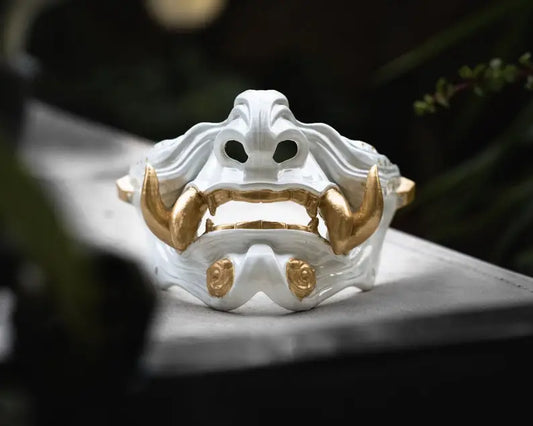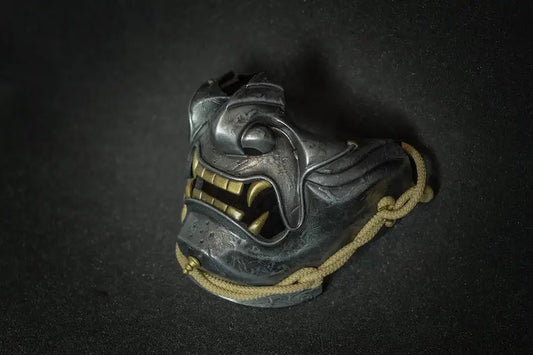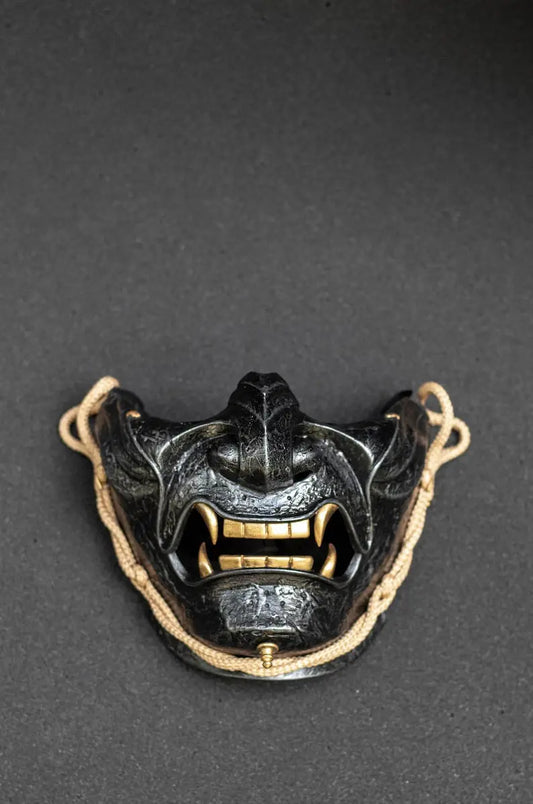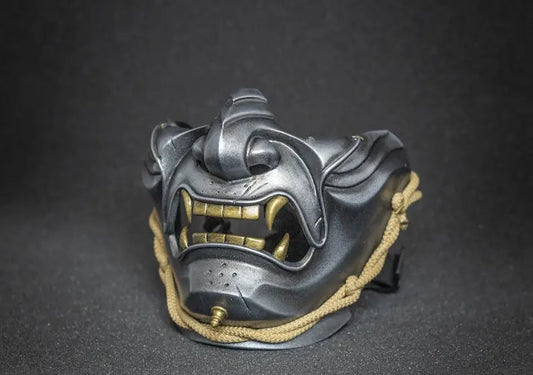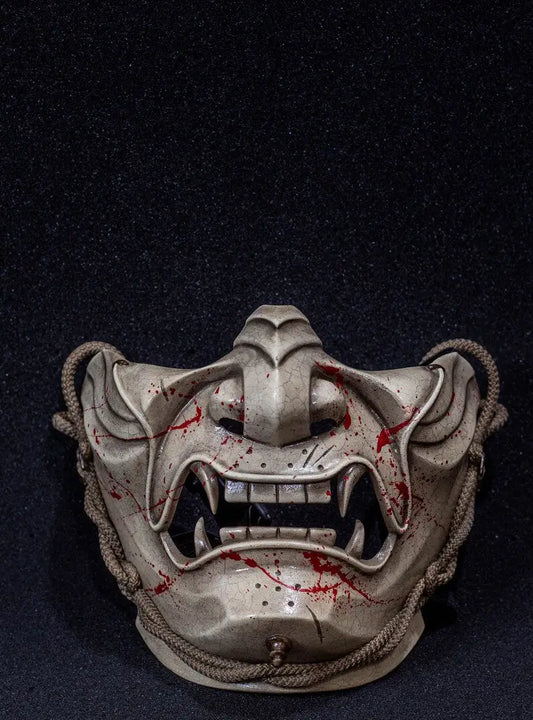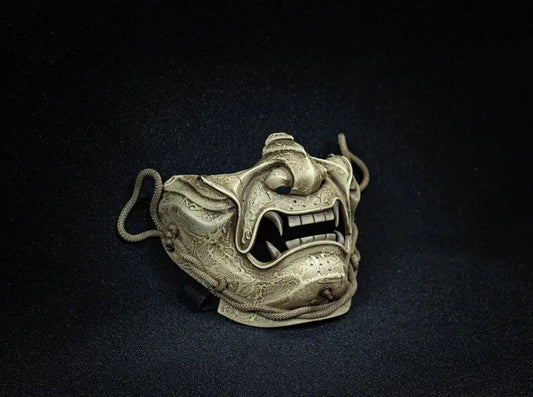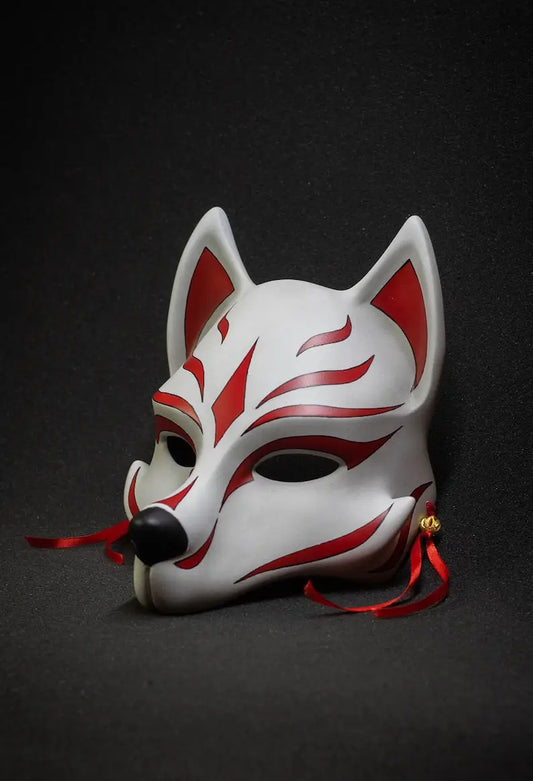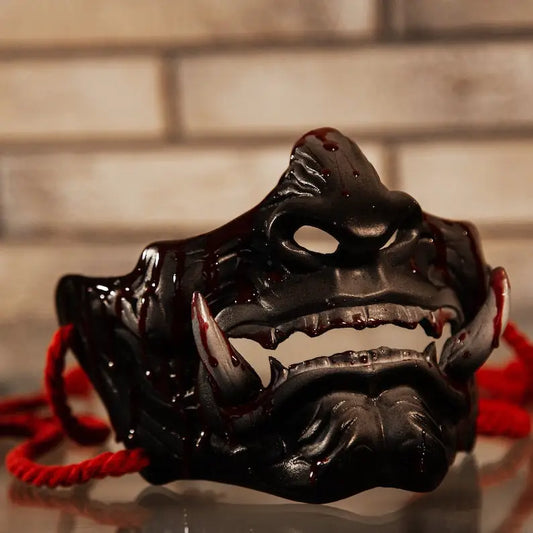🎭✨ Japanese Masks: Spirits Carved in Silence, Faces of Culture and Power 🔥⛩️🕊️
A silent stage. A flicker of candlelight. A figure enters — their steps deliberate, their movements slow. Their face is not their own — it is carved, painted, and ancient. It stares blankly, yet sees everything. It is sorrowful. Or serene. Or perhaps demonic.
This is the world of Japanese masks — where each expression is more than wood or paper. It is a spirit, a symbol, a story passed down through centuries.
From sacred Shinto rituals to the stylized drama of Noh and the explosive spectacle of Kabuki, masks in Japan are tools of transformation — worn not to hide, but to reveal something deeper.
Let us step behind the mask and explore this fascinating cultural artifact in all its forms — theatrical, ceremonial, folkloric, and contemporary 🧧🖌️🧠
🏯 The Origins: When Spirit Met Wood 📜🌿
Masks in Japan have existed for over 1,300 years, evolving from religious objects into theatrical and artistic ones.
🕊️ Shinto & Indigenous Rituals
Long before formal theater, masks were used in kagura (神楽) — a form of sacred Shinto dance meant to appease the kami (gods) and entertain spirits during seasonal festivals.
Wearing a mask was a way to embody a deity — to allow the divine to enter the human world. This concept is key to understanding all Japanese mask usage: a mask is not a disguise, but a vessel for something else to enter.
🎭 Noh Masks (能面): Theater of the Soul 🎐🌘
Perhaps the most famous of all Japanese masks are those used in Noh theater, a classical performance art that dates back to the 14th century.
Each Noh mask is a hand-carved, painted wooden sculpture — minimalist yet expressive, designed to evoke complex emotion with the subtlest tilt of the head.
🧠 The Magic of Noh Masks:
-
Static expression transforms with lighting and movement
-
A single mask can appear happy, sorrowful, or angry depending on how it's worn
-
Meant to express yūgen (幽玄) — a mysterious, profound beauty that lies beyond words
🎭 Categories of Noh Masks:
| Type | Meaning |
|---|---|
| Okina (翁) | Ancient man; used in New Year rituals and opening prayers |
| Ko-omote (小面) | Young woman; symbol of purity and beauty |
| Hannya (般若) | Jealous female demon; one of the most iconic masks 👹🔥 |
| Shikami (獅子神) | Wild beast or fierce spirit |
| Tengu (天狗) | Bird-faced goblin; mischievous forest protector 🐦👺 |
| Yūrei (幽霊) | Ghosts, spirits of the dead — often white-faced, hollow-eyed 👻 |
Each mask takes weeks to carve, often from Japanese cypress (hinoki) and finished with natural pigments, washi paper, and crushed seashells.
These masks are sacred tools — never mere props — and many are passed down through generations of performers.
👹 Oni Masks: Faces of Demons, Festivals, and Folklore 🔥🪵
Outside the theater, Japan’s folklore is rich with yōkai (supernatural creatures) and oni (demons). These beings often appear in festivals, parades, and seasonal rituals — and they come to life through masks.
🔥 Oni Masks:
-
Usually red or blue, with horns, fangs, and bulging eyes
-
Worn during Setsubun, the day before spring, to chase away evil spirits
-
Participants throw beans (mamemaki) at the oni shouting:
“Oni wa soto! Fuku wa uchi!”
(Out with demons, in with fortune!) 🫘👹✨
These masks are vibrant and fierce — not always evil, but always powerful.
They also feature in local matsuri (festivals) across Japan — such as the Namahage Festival in Akita, where masked men dressed as mountain demons go door to door warning lazy children to behave 😱🎎
🤡 Kyōgen and Kabuki Masks: Humor and Drama on Stage 🎪🎨
🕺 Kyōgen Masks:
-
Used in comedic interludes between Noh plays
-
Caricatured and exaggerated — drunkards, farmers, fools
-
Reflect folk humor, storytelling, and satire 😆🍶
🎭 Kabuki Masks (Sort Of)
Kabuki actors rarely use masks, but instead rely on kumadori (face painting) — stylized makeup that serves a similar purpose.
However, Kabuki-style masks have become popular as:
-
Tourist souvenirs 🎁
-
Festival wear 🧧
-
Decorative art 🖼️
Common motifs:
-
Red stripes for heroism (aragoto characters)
-
Blue stripes for villains or spirits
-
White base = nobility or supernatural energy
🎨 The Craft: Making a Japanese Mask by Hand 🔨🧵
True Japanese masks are works of art — handcrafted by skilled artisans who train for years.
🔧 The Process:
-
Wood selection (often hinoki or paulownia)
-
Carving by hand — every line intentional, no two masks alike
-
Lacquering and sanding
-
Painting with natural pigments, sometimes crushed seashell or gold leaf
-
Polishing and stringing — the mask must sit perfectly on the face or wall
In Kyoto, Nara, and Tottori, you can still find traditional mask carvers preserving this art — making Noh, Hannya, and oni masks for theater, festivals, and collectors.
Prices range from modest to thousands of dollars — depending on age, maker, and authenticity.
🧧 Symbolism: What Masks Represent in Japanese Culture 🪷👁️
Japanese masks often express dualities — between beauty and horror, human and spirit, illusion and reality.
| Mask Type | Symbolism |
|---|---|
| Hannya | Jealousy, wrath, inner pain hidden beneath elegance 🔥😢 |
| Tengu | Pride, protection, supernatural insight 🐦⚔️ |
| Okame | Feminine joy, good fortune, fertility 😊🎀 |
| Fox (Kitsune) | Trickery, transformation, spiritual messenger 🦊⛩️ |
| Otafuku | Luck, laughter, and domestic joy 🏠😄 |
Wearing or displaying a mask is often a ritual gesture — used to ward off evil, channel a spirit, or create an emotional atmosphere.
🎊 Japanese Masks in Festivals and Street Culture 🌟🎐
Masks in Japan aren't limited to the stage — they’re a central feature of matsuri (festivals) and seasonal street life.
Common Festival Masks:
-
🦊 Kitsune (Fox) — linked to Inari shrines, clever and sacred
-
👺 Tengu — protector of forests and trickster monks
-
😊 Okame/Otafuku — round-faced woman of happiness
-
👹 Oni — demons for warding off misfortune
You’ll find children wearing plastic or paper versions of these masks at summer festivals (natsu matsuri), while vendors sell them alongside cotton candy and goldfish scooping booths 🐟🍧🎠
Masks here are playful, light, joyful — a way to connect to heritage through fun.
🖼️ Modern Takes: Japanese Masks in Fashion, Art, and Media 🎮🧥
Japanese masks have made their way into:
-
Anime & Manga (Demon Slayer, Naruto, Spirited Away) 🌀🎥
-
Street fashion (techwear, cyberpunk, oni streetwear) 😷🖤🔥
-
Tattoo art and design 🖋️🎴
-
Home décor and collector’s items — both authentic and replicas
Contemporary artists and designers are reimagining masks as:
-
Symbolic fashion statements
-
Streetwear logos
-
Theatrical photography tools
-
Spiritual talismans
In this modern context, the Japanese mask becomes a fusion of ancestral identity and global subculture 🌍👺👟
🏮 How to Display or Use Japanese Masks 🧱🎐
Whether you’re a collector, a performer, or a fan, here are some ways to enjoy Japanese masks:
🖼️ For Display:
-
Mount on wooden plaques with traditional tassels
-
Hang in entryways or tatami rooms for spiritual charm
-
Rotate seasonally (Hannya for Setsubun, Okame for New Year)
🎭 For Theater or Cosplay:
-
Choose authentic wooden masks for Noh re-enactments
-
Use lighter, foam or resin ones for cosplay, dance, or martial arts demonstrations
🎁 For Gifting:
-
Oni masks as protection charms
-
Kitsune masks as symbols of cleverness and luck
-
Hannya masks as reminders of emotional strength and transformation
💭What Japanese Masks Teach Us 🕯️🌸
A Japanese mask is never just a mask.
It’s a portal — to mythology, emotion, archetype, and ancestral spirit. It gives voice to the voiceless. It reveals hidden truths.
It is:
-
🎭 A performer’s silent scream
-
⛩️ A priest’s holy vessel
-
🔥 A demon’s dance at the edge of fire
-
🧧 A child’s laughter at a festival booth
To hold one is to hold a piece of Japan’s soul — hand-carved, spirit-bound, and timeless.
So whether you wear one in ceremony, hang one on your wall, or admire one in a gallery — honor it. Listen to it. Let it reveal something deeper.
Because behind every Japanese mask, there’s always a face worth meeting 🎭🧡⛩️


